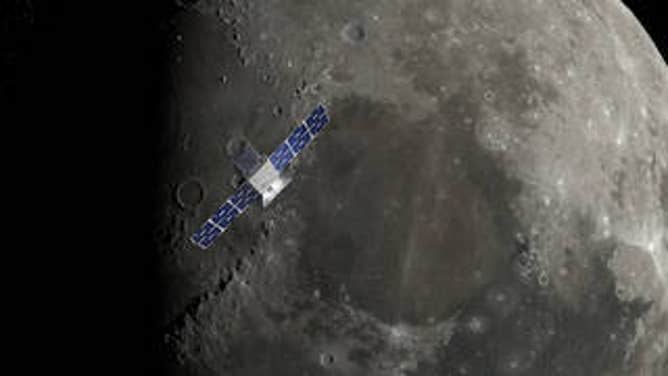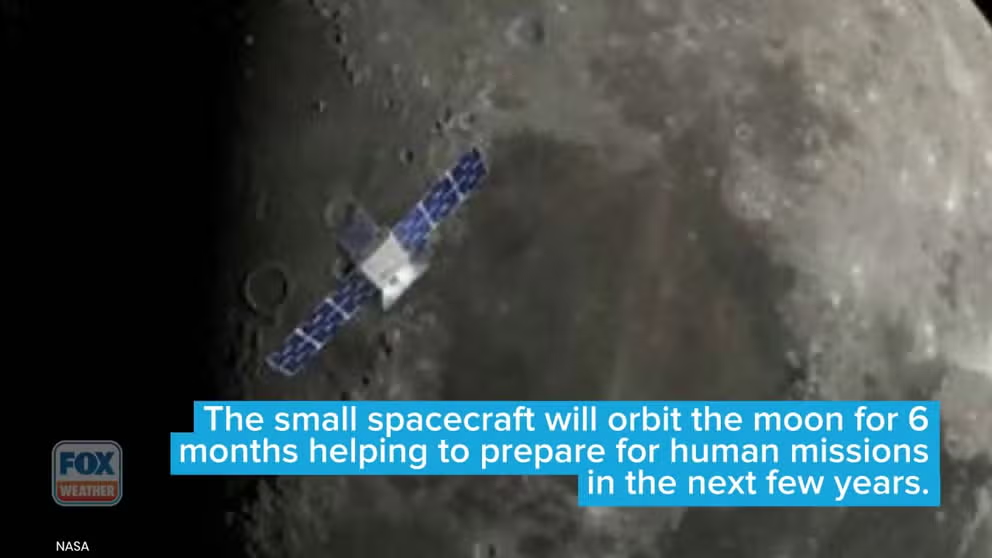Back online: Communications restored with NASA moon spacecraft
CAPSTONE is 'happy and healthy' initial data shows after temporary blackout

CAPSTONE over the lunar North Pole: After arrival at the Moon, CAPSTONE will begin its 6-month-long primary mission. The mission will validate a near rectilinear halo orbit’s characteristics by demonstrating how to enter into and operate in the orbit. (Credits: Illustration by NASA/Daniel Rutter)
(NASA)
Engineers have restored communications with NASA's CAPSTONE spacecraft en route to the moon Wednesday after teams worked tirelessly for 24 hours to get to the bottom of the problem with the tiny spacecraft nearly 200,000 miles from Earth.
Advanced Space, which manages and operates the mission for NASA, confirmed that CAPSTONE is back online on Wednesday, sending signals to Earth via the Deep Space Network.
HOW TO WATCH FOX WEATHER ON TV
"The team will continue with this work, and once the communications system is fully recovered, the team will review spacecraft status and telemetry to monitor for any additional issues since the communications outage began," Advanced Space said. "Initial data from the spacecraft suggests that it is happy and healthy."
NASA uses a series of antennas worldwide known as the Deep Space Network to downlink and uplink data with its spacecraft all over the universe, including CAPSTONE.
DEEP IMPACT: WHAT TO KNOW ABOUT ASTEROIDS AND WHEN WE SHOULD BE WORRIED ABOUT THEM
Rocket Lab launched the microwave-sized CAPSTONE spacecraft from New Zealand on June 28. On July 4, CAPSTONE separated from Rocket Lab's Lunar Photon upper stage, leaving Earth's orbit and setting it on the path to lunar transfer orbit.
However, 11 hours after separation, the satellite was not communicating via the DSN.
Mission operators were able to identify the cause of the blackout, and engineers re-established a signal at 7:26 a.m. MT Wednesday, according to Advanced Space. After further recovery efforts, the team gained telemetry from the spacecraft less than an hour later, confirming CAPSTONE was functioning correctly.
NASA's CAPSTONE mission will test out Gateway orbit
Launching in 2022, the microwave-size spacecraft will orbit the moon to test out NASA's Lunar Gateway orbit before humans arrive in 2025.
Advanced Space said CAPSTONE is back online thanks to rapid engineering support and resources for many mission partners.
Due to the issue, the spacecraft team delayed the first trajectory maneuver scheduled for Tuesday. Once teams determine the spacecraft is entirely back to normal, an updated trajectory correction maneuver will be uploaded to the spacecraft.
CLICK HERE TO GET THE FOX WEATHER UPDATE PODCAST
CAPSTONE stands for Cislunar Autonomous Positioning System Technology Operations and Navigation Experiment. The $19.98 million technology demonstration mission was designed to test navigating around the moon in a Near-Rectilinear Halo Orbit. NASA plans to use this same specialized orbit for the Lunar Gateway, where astronauts will stop before heading down to the moon in 2025.
Even with the delayed trajectory correction maneuver, the spacecraft could still arrive in its lunar orbit by mid-November.
